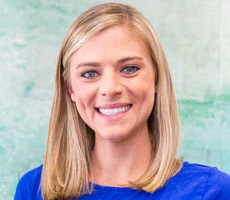The Leading Speakers Bureau for Booking Top Entertainment, Celebrities, and Speakers.

Gregory Petsko
Gregory Petsko Biography
My research is concerned with the three-dimensional structures of proteins and their biochemical functions. Most of my work is done in collaboration with Prof. Dagmar Ringe; we share facilities, students, and a number of projects. The tools used by our group are X-ray crystallography, molecular biology (especially site-directed mutagenesis), yeast genetics, organic synthesis, enzyme kinetics and molecular dynamics calculations. These methods are being applied to several general problems; the ones I am most involved with include: the structural basis for efficient enzymic catalysis of proton and hydride transfer; the role of the metal ions in bridged bimetalloenzyme active sites; direct visualization of proteins in action by time-resolved protein crystallography; the evolution of new enzyme activities from old ones; and the biology of the quiescent state in eukaryotic cells.
figure1In some of these projects, we are trying to understand the structural basis for the catalytic power of the enzymes triose phosphate isomerase, xylose isomerase, mandelate racemase, aminopeptidase, mutarotase and ketosteroid isomerase. For all of them, structural information is being used to guide site-directed mutagenesis of the active site residues and combined quantum mechanics/molecular mechanics simulations of the catalytic reaction.
Protein crystallography is normally a static tool and cannot be used to follow biological reactions in real time. We have been involved in the development of new diffraction techniques, including Laue diffraction, that are capable of recording entire protein crystal data sets in a millisecond. When combined with low-temperature techniques, such methods can be used to determine the structures of catalytic intermediates.
A new area of research in the laboratory is the use of yeast genetics and biochemical techniques to study the quiscent state of eukaryotic cells. We have recently shown that cells arrest their cell cycle in G1 and then exit to the G0 state when unfolded proteins accumulate in the cytoplasm. Accompanying these cell cycle changes is a global shutdown in ribosomal protein expression. This process is partly under control of the heat shock transcription factor HSF. Another project that uses yeast genetics and molecular biology is our attempt to design a new metabolic pathway that will allow yeast to grow on lactonitrile or lactamide as sole carbon sources. The enzymes in this new pathway are being engineered from enzymes of the mandelonitrile pathway in bacteria by a combination of structure-directed and random mutagenesis.
All American Speakers Bureau is a full-service talent booking agency providing information on booking Gregory Petsko for speaking engagements, personal appearances and corporate events. Contact an All American Speakers Bureau booking agent for more information on Gregory Petsko speaking fees, availability, speech topics and cost to hire for your next live or virtual event.
Tag Cloud
We are here to help! Call us to speak with a booking agent to discuss your event or specific speaker request.

Gregory Petsko Booking Agency: Celebrity Appearance Fees and Availability
Contact a booking agent to check availability on Gregory Petsko and other top corporate entertainment
Exclusive Buyer's Agent that Books Celebrities, Entertainers and Speakers like Gregory Petsko for Speaking Engagements, Appearances and Corporate Events
Please Note: All American Speakers Bureau is a full-service talent booking agency providing information on booking Gregory Petsko for speaking engagements, personal appearances and corporate events. Contact an All American Speakers Bureau booking agent for more information on Gregory Petsko speaking fees, availability, speech topics and cost to hire for your next live or virtual event.
Related Tags: Information on keynote speaking engagements, personal appearances, corporate entertainment and appearance fees for Gregory Petsko, an inspirational motivational speaker. bio for Gregory Petsko agency, manager, speaker fees, speaking agency entertainment booking agency, speaker's fee, how to book, booking agencies for lectures, speaking event, celebrity appearances for hire, who is agent, manager, publicist, who represents, speakers bureau management who represents Gregory Petsko

